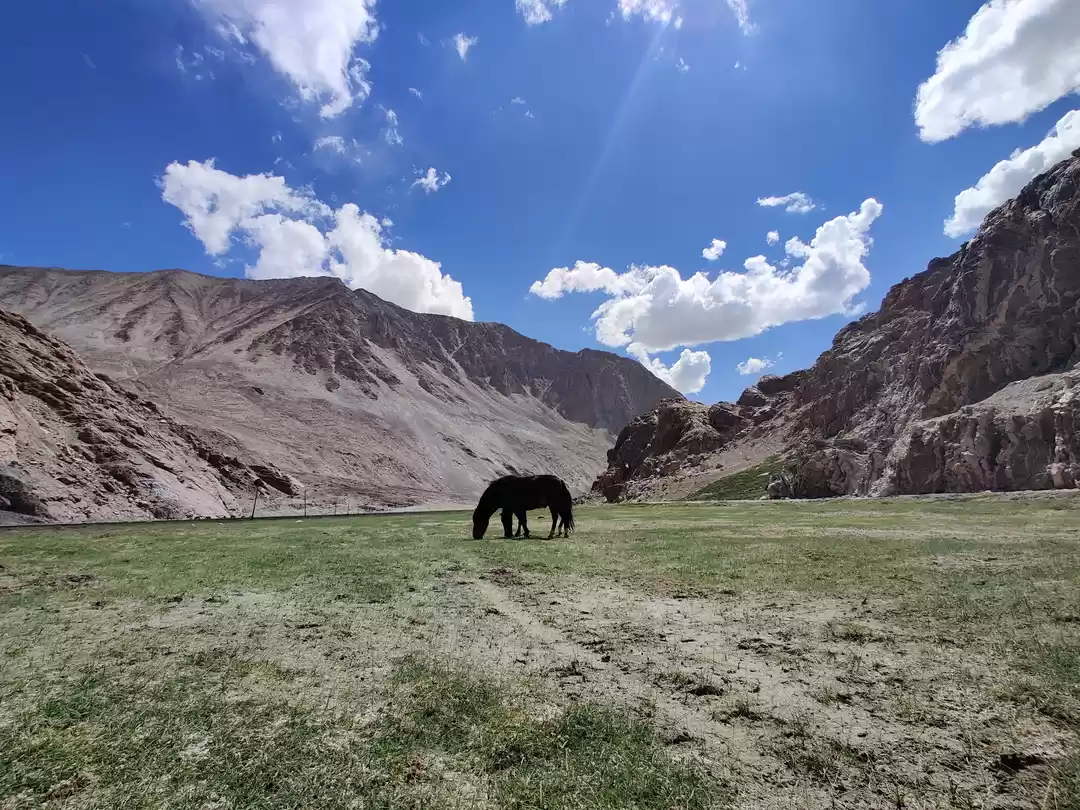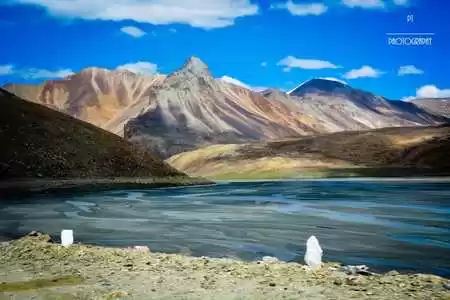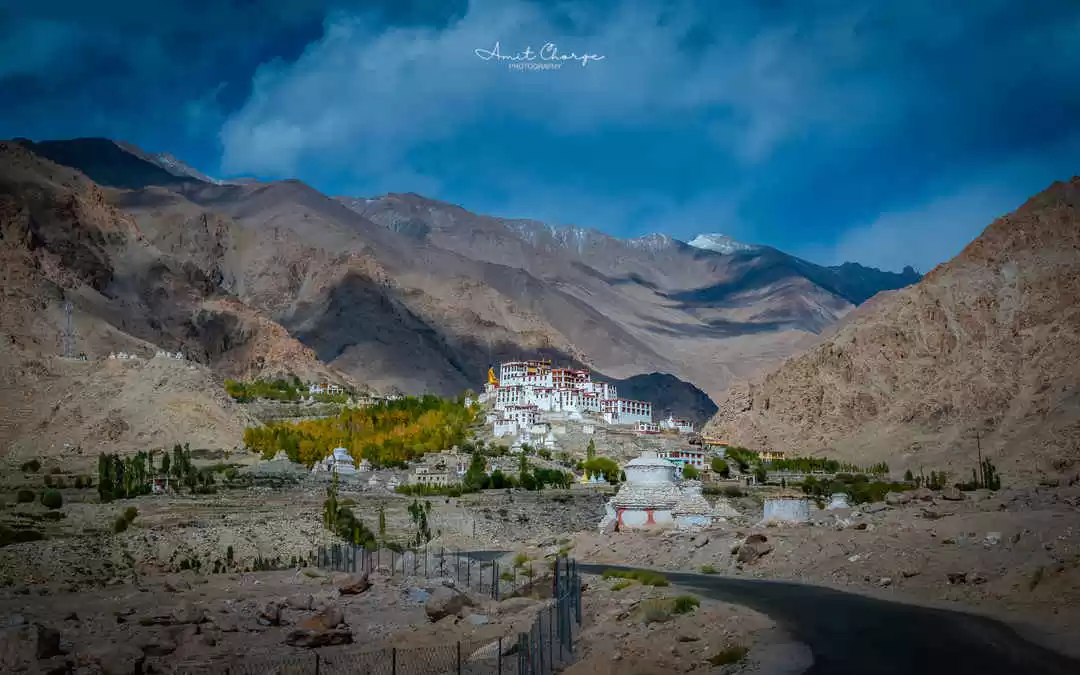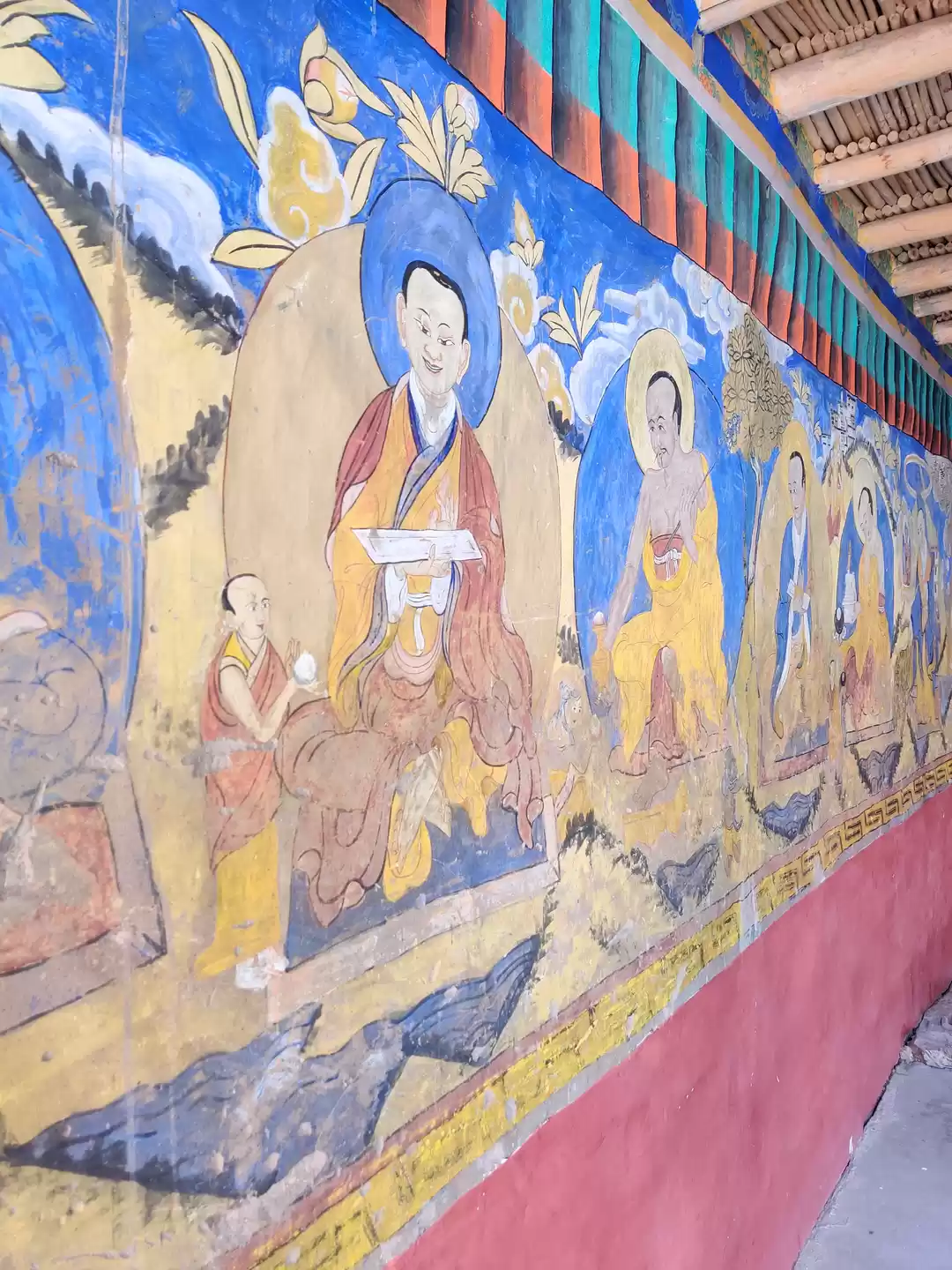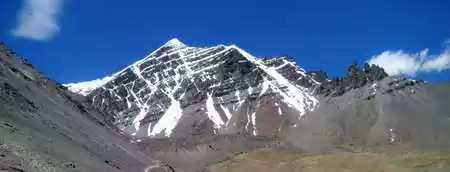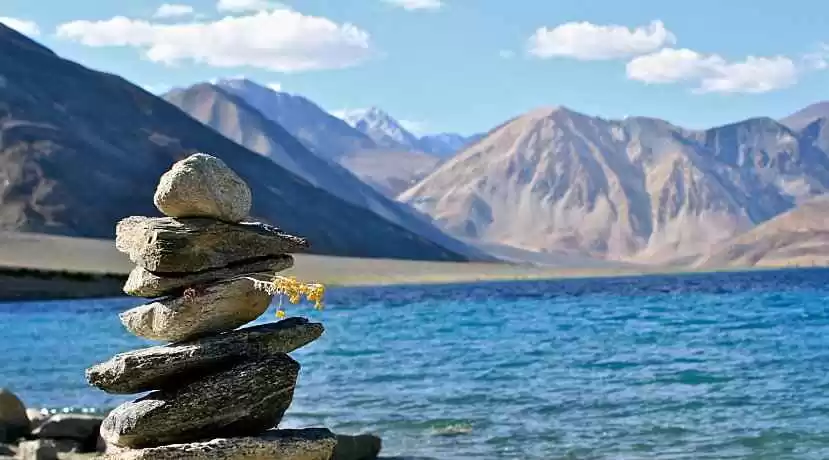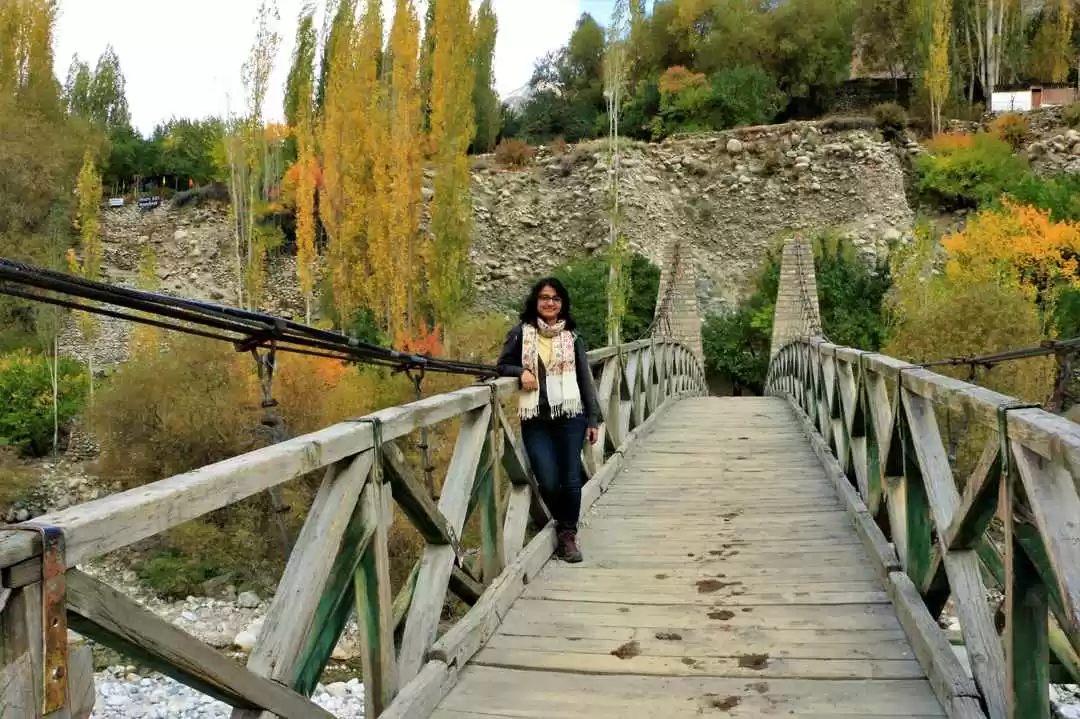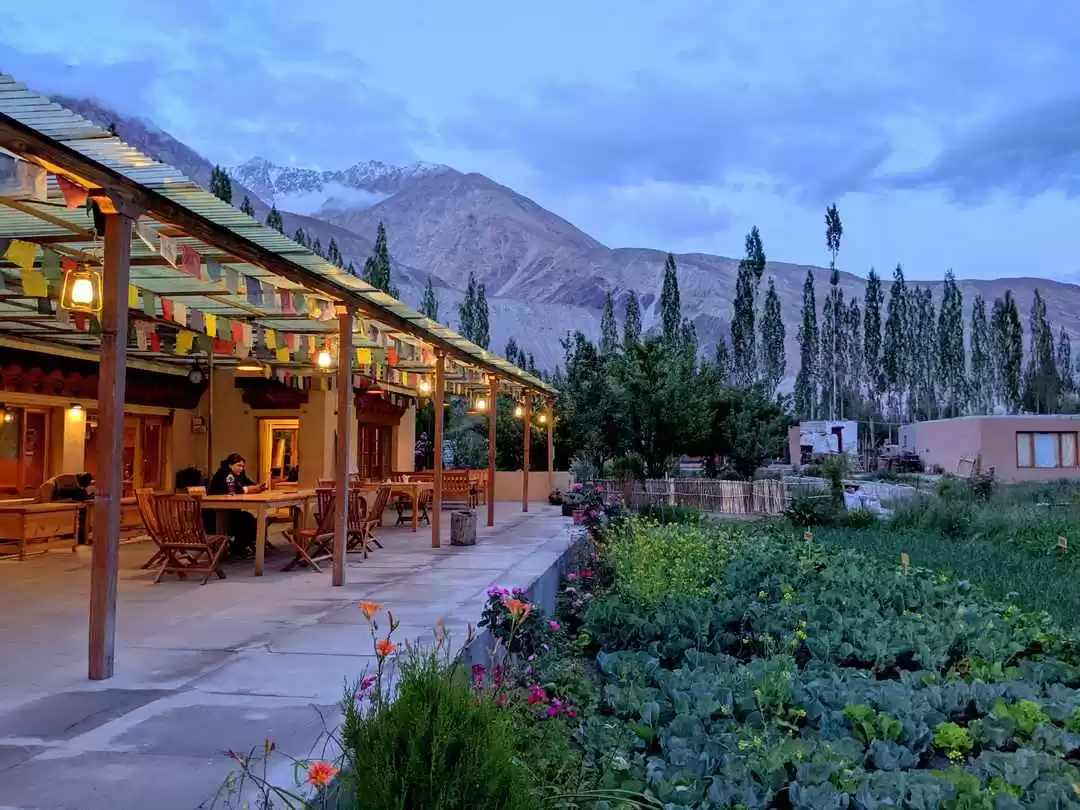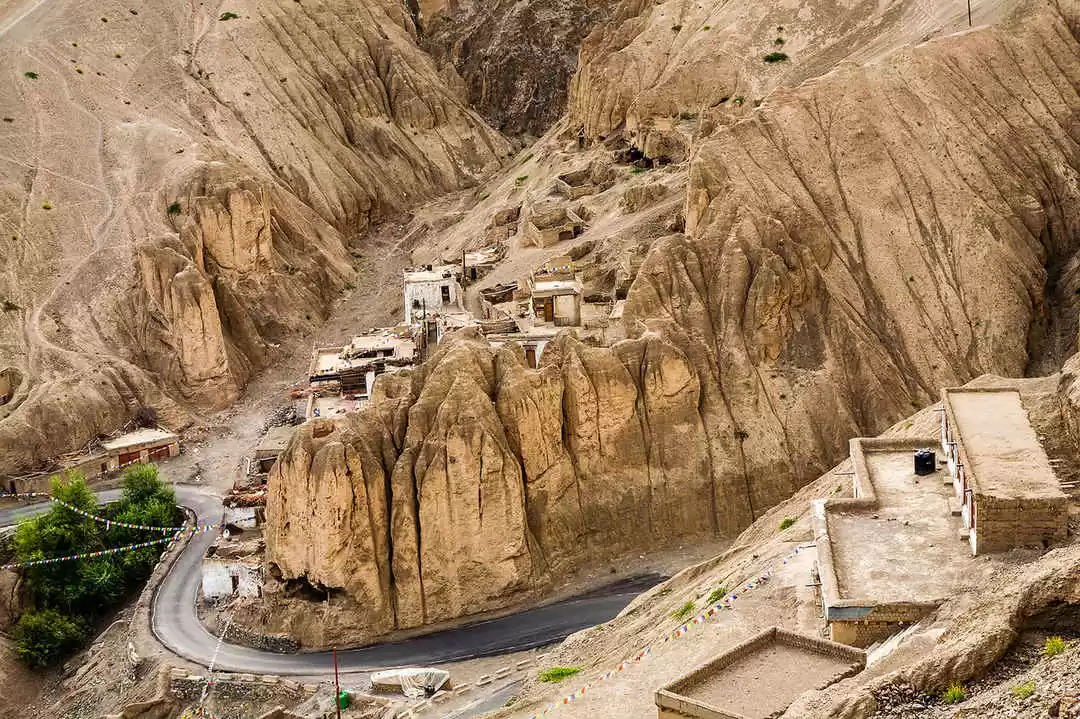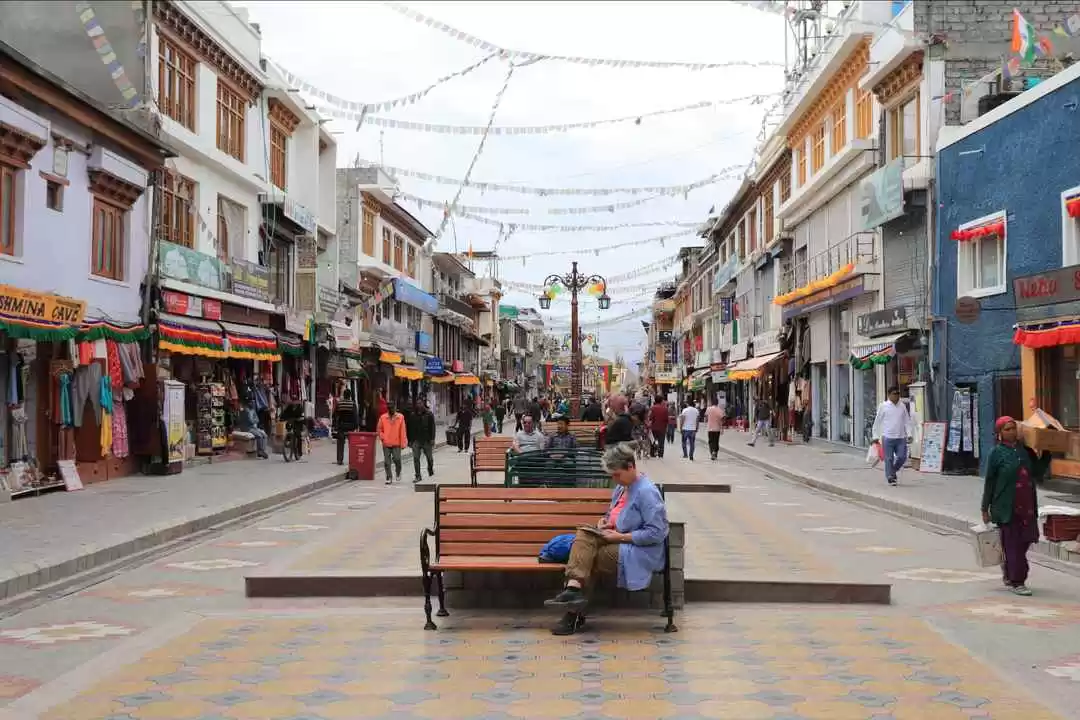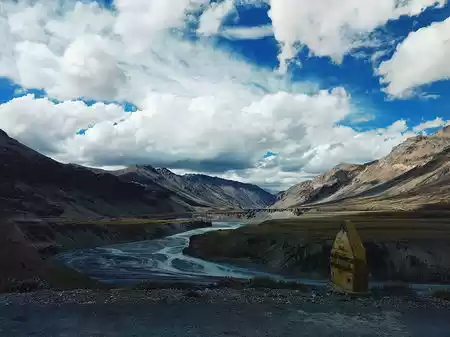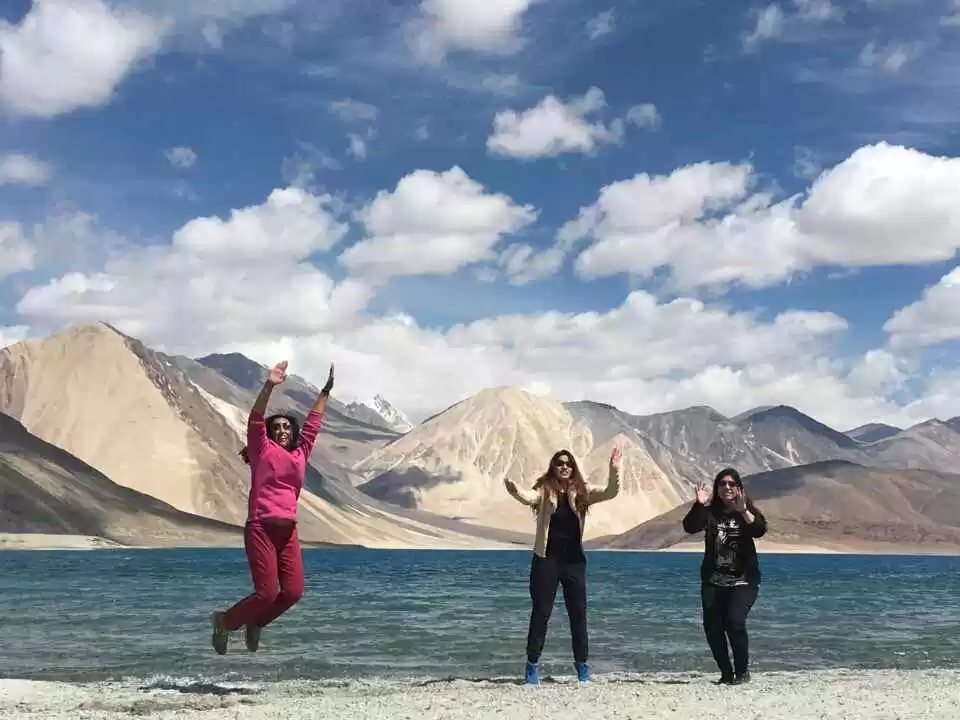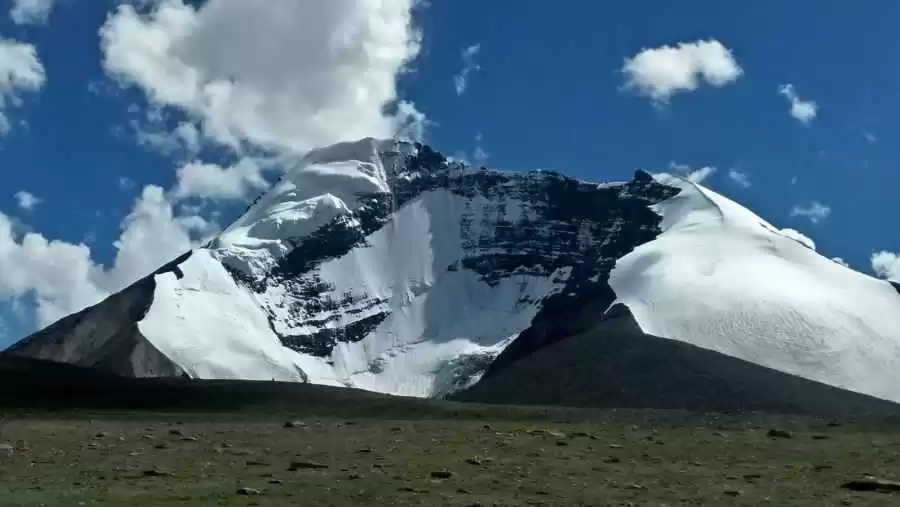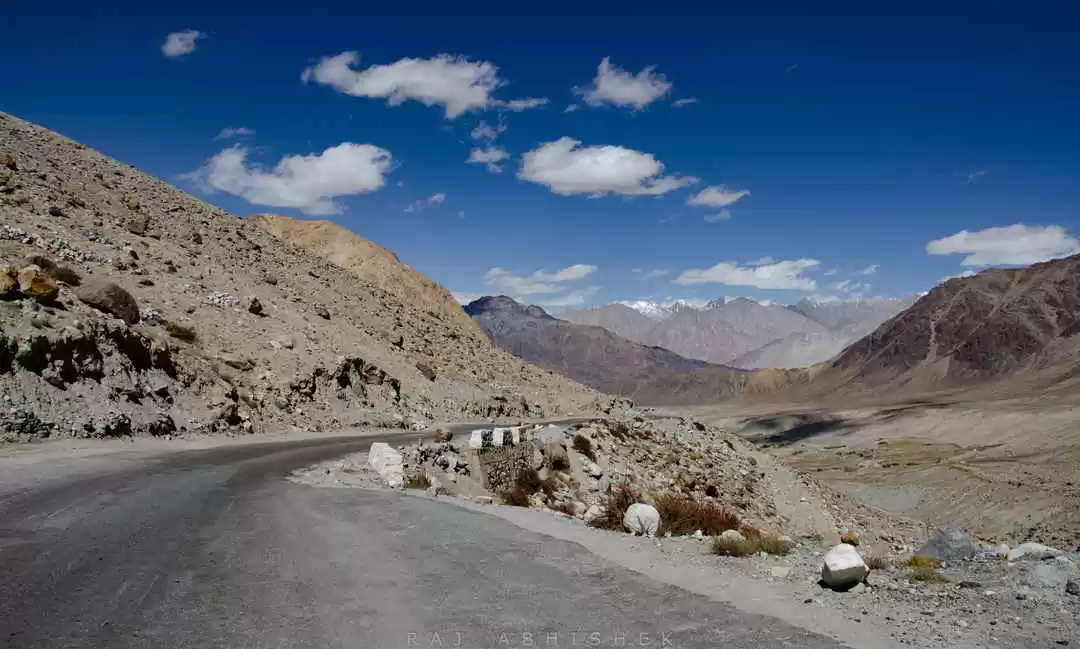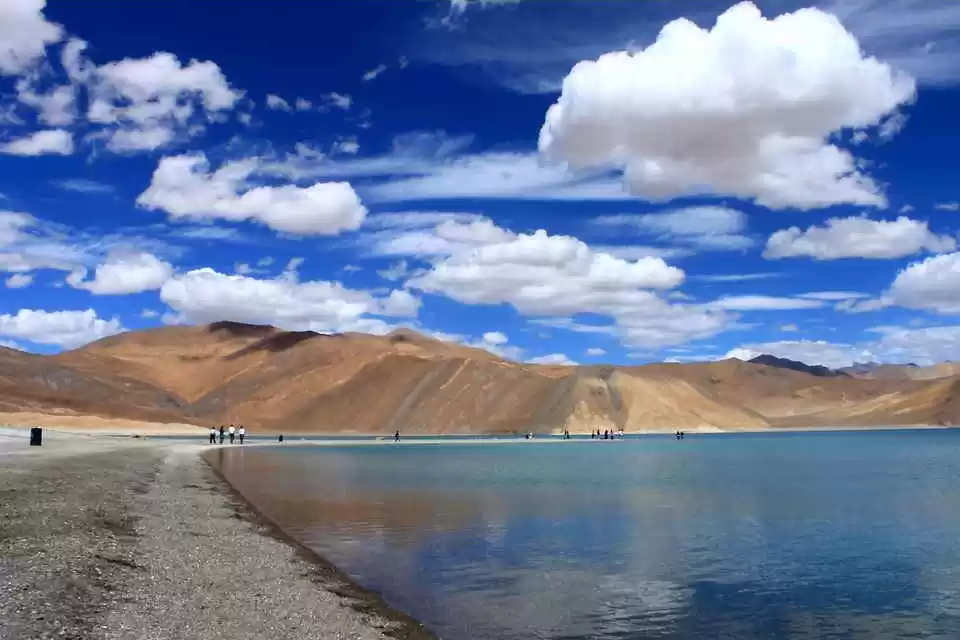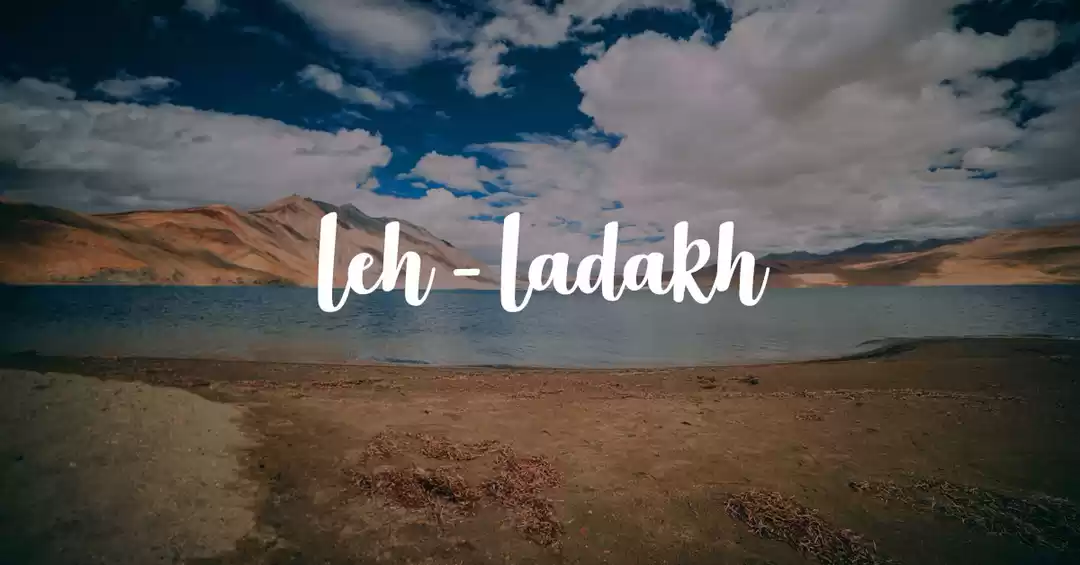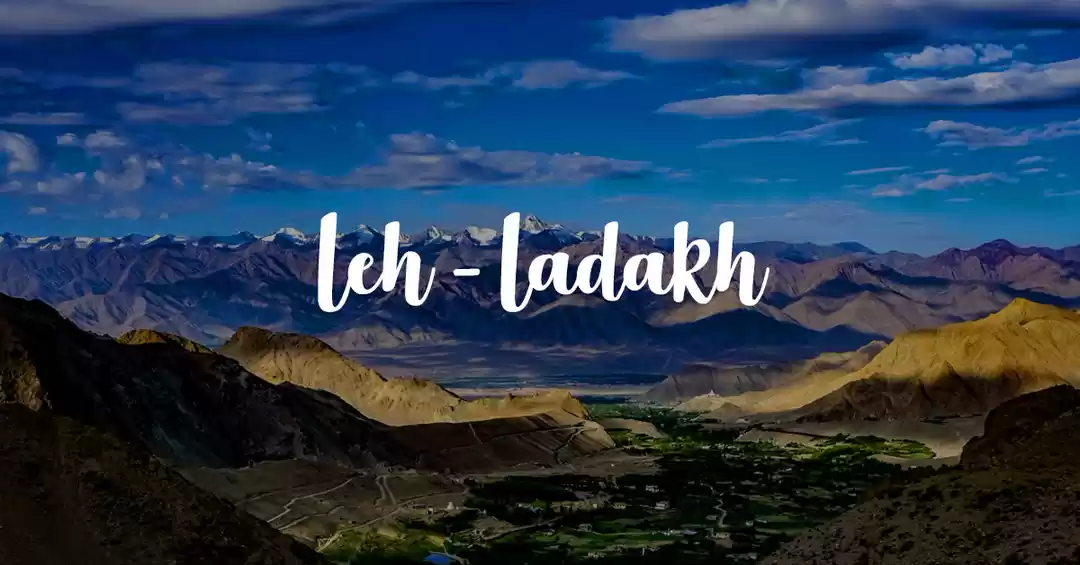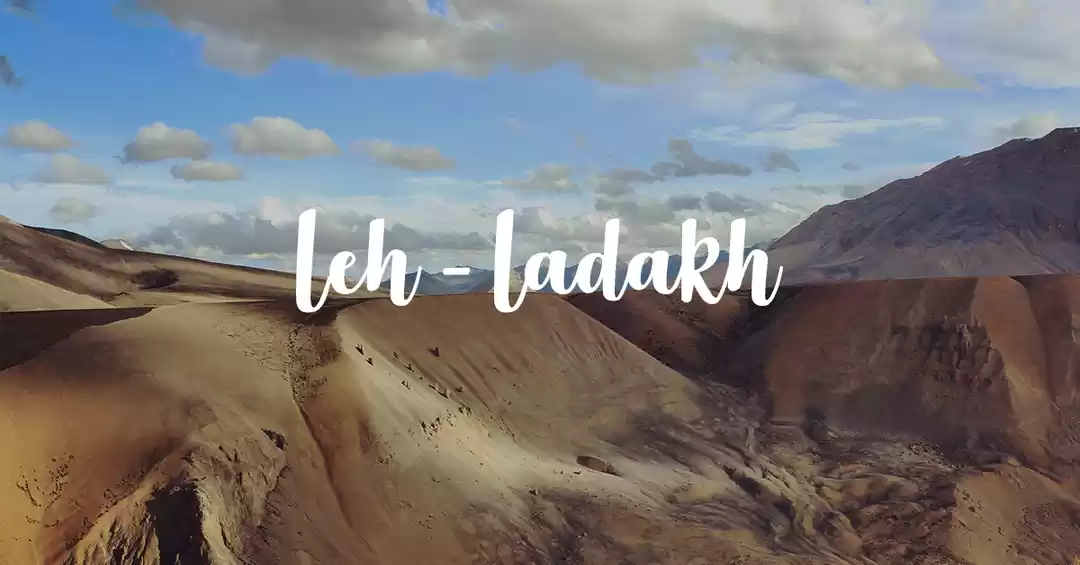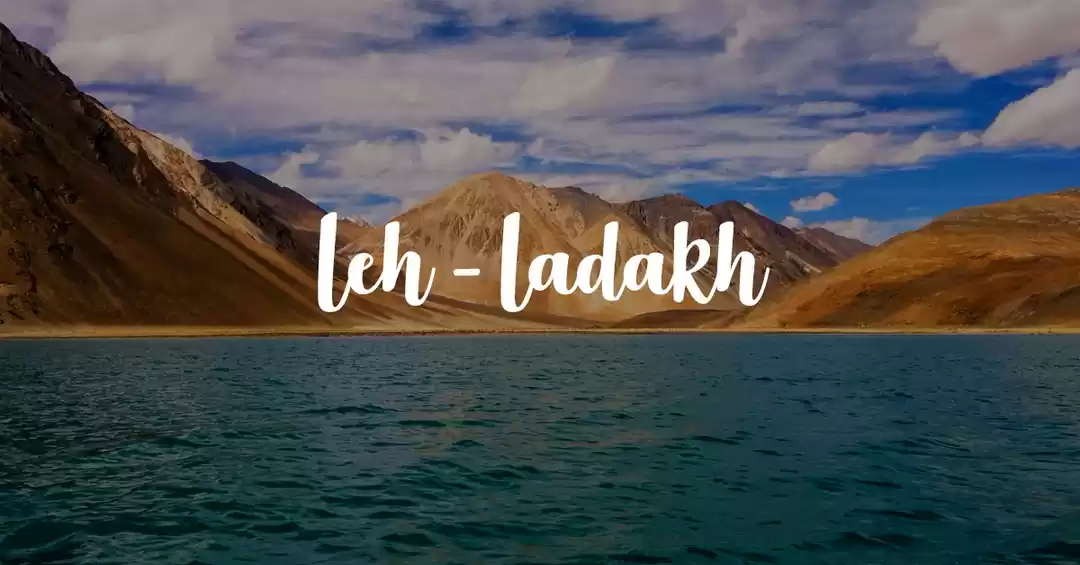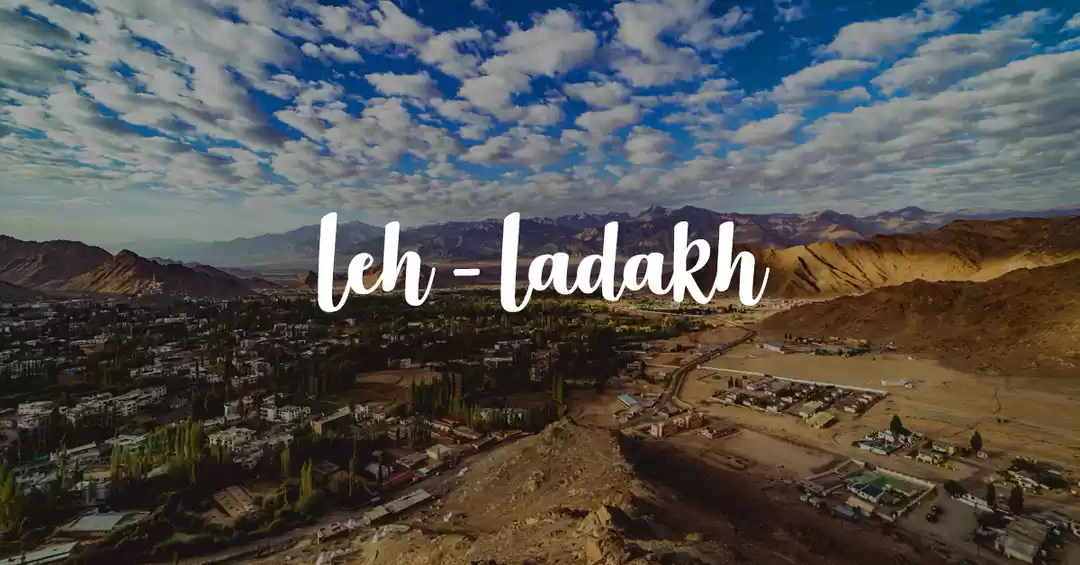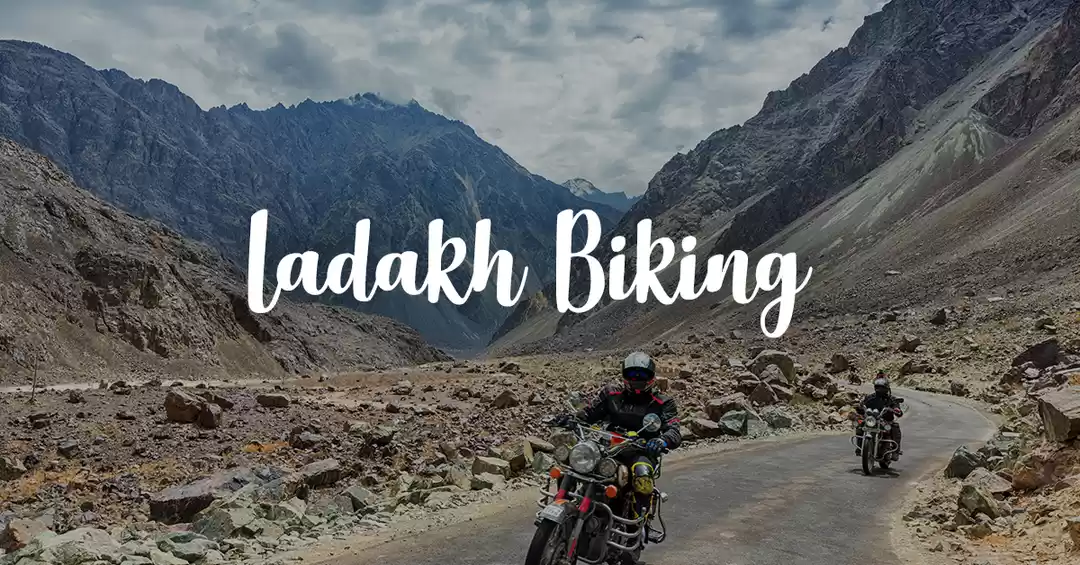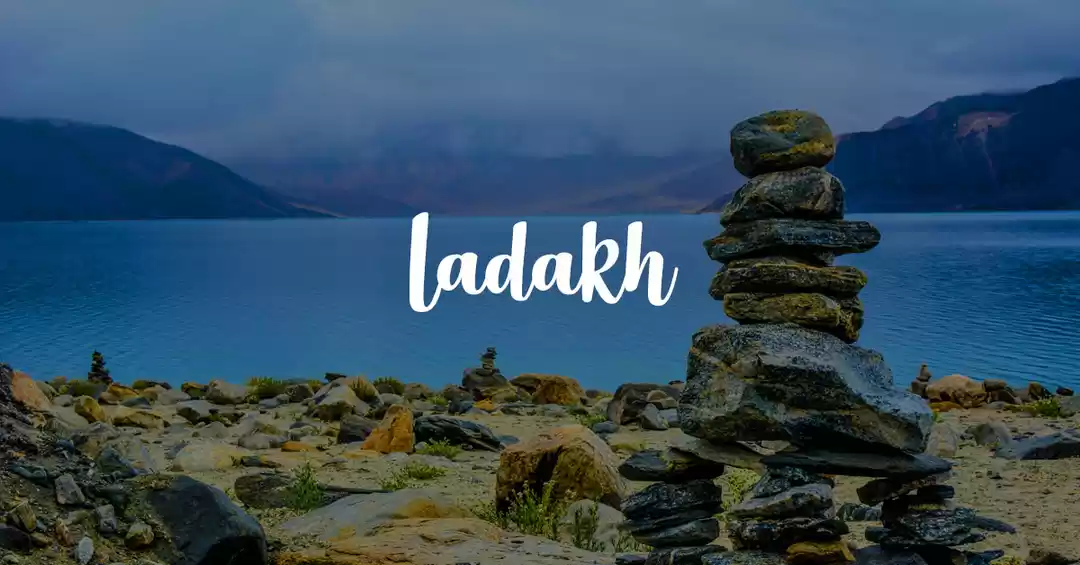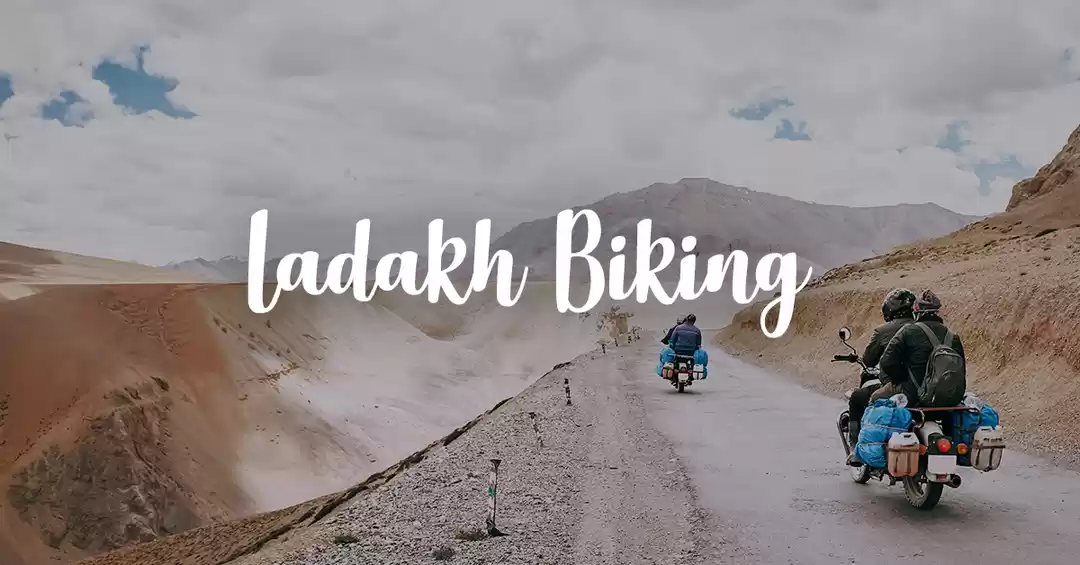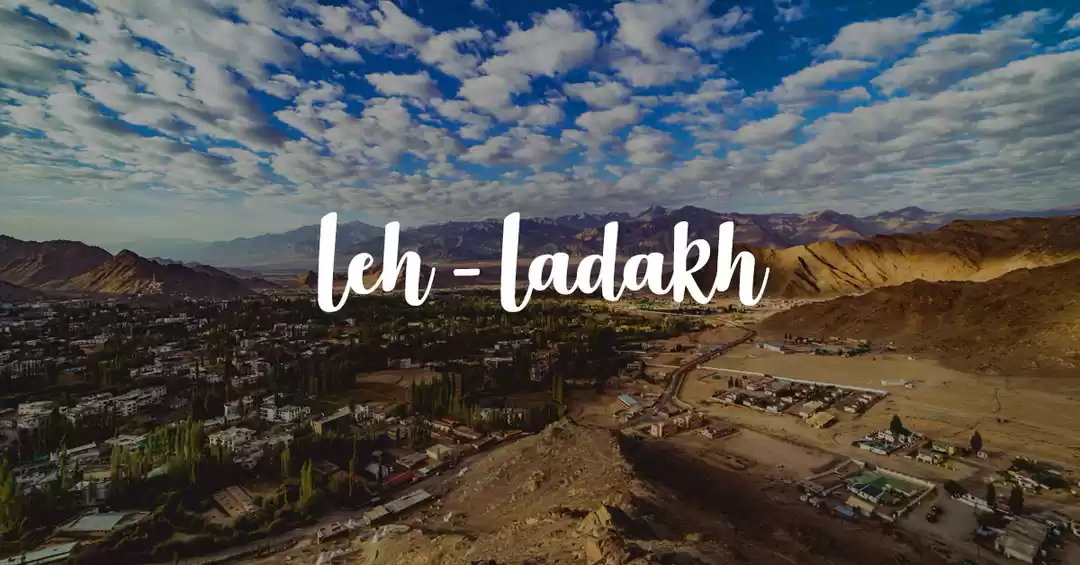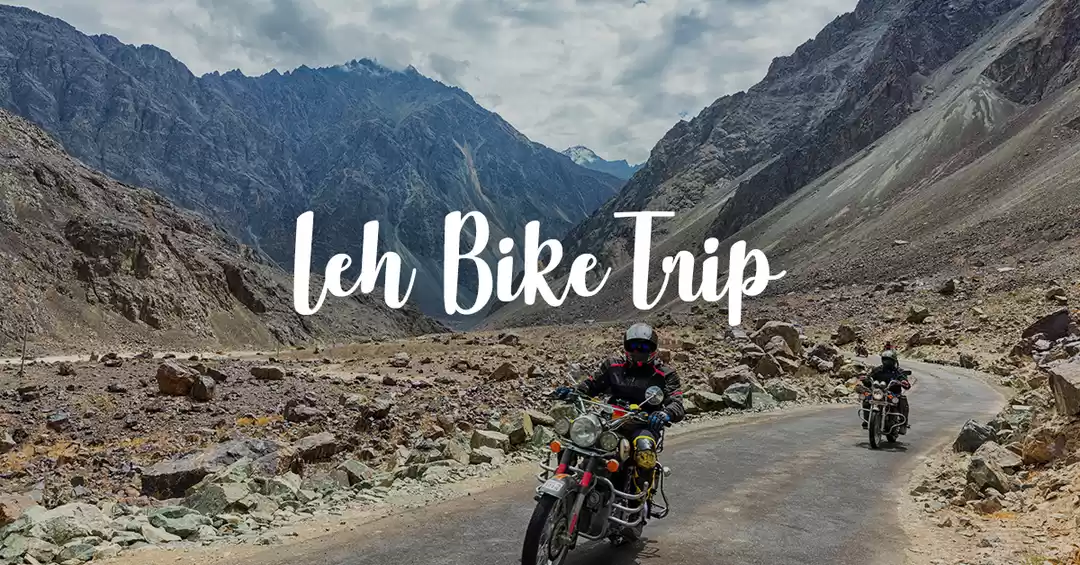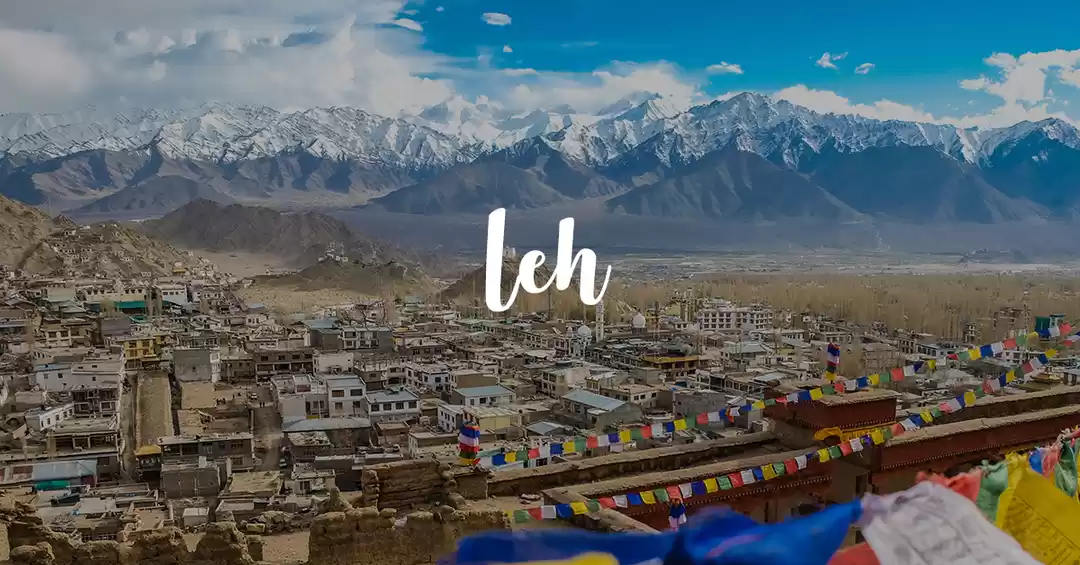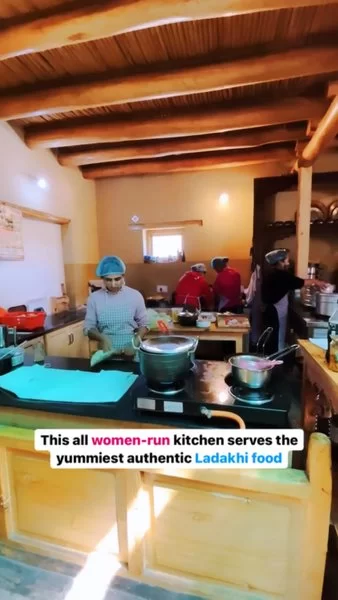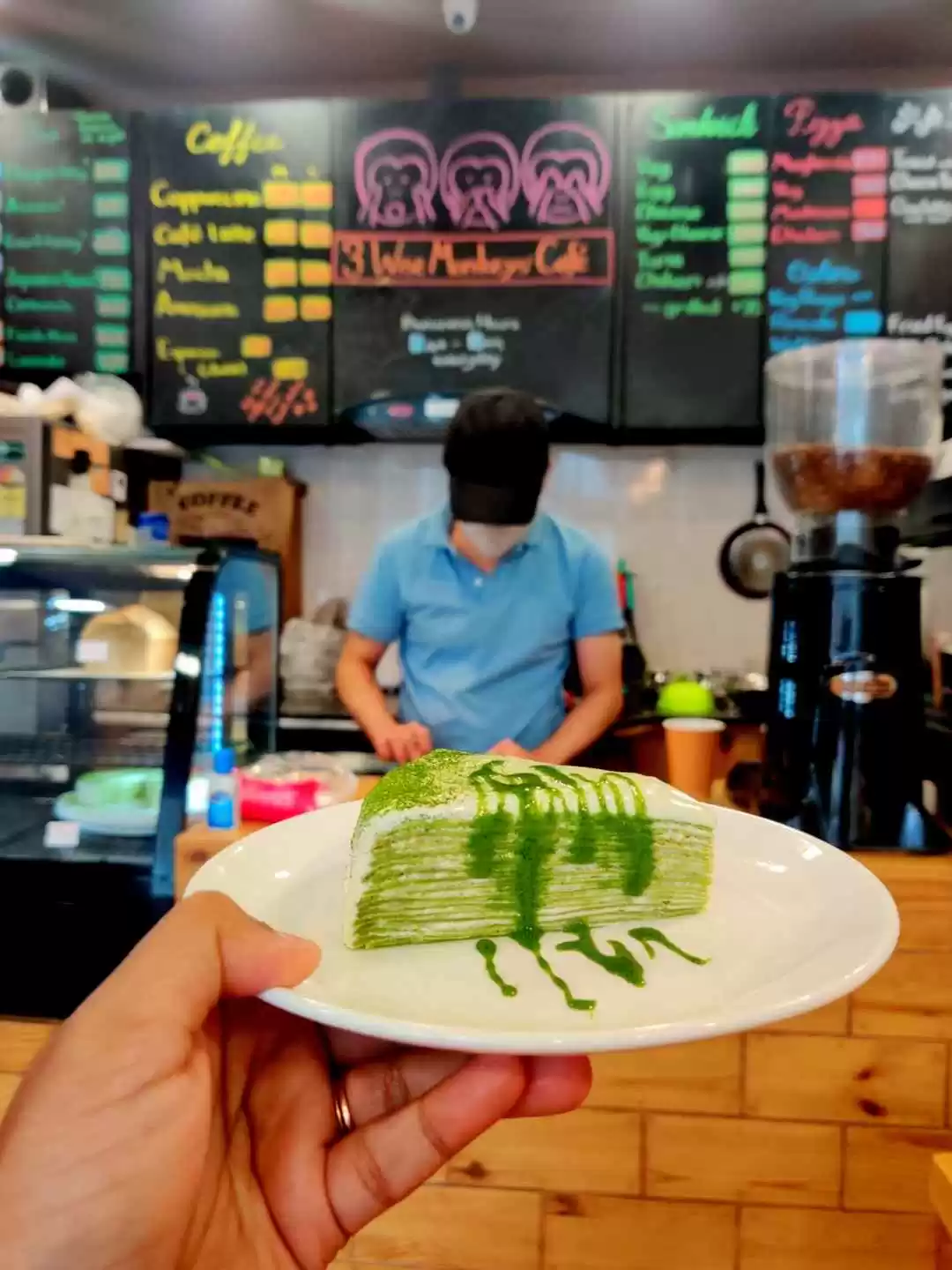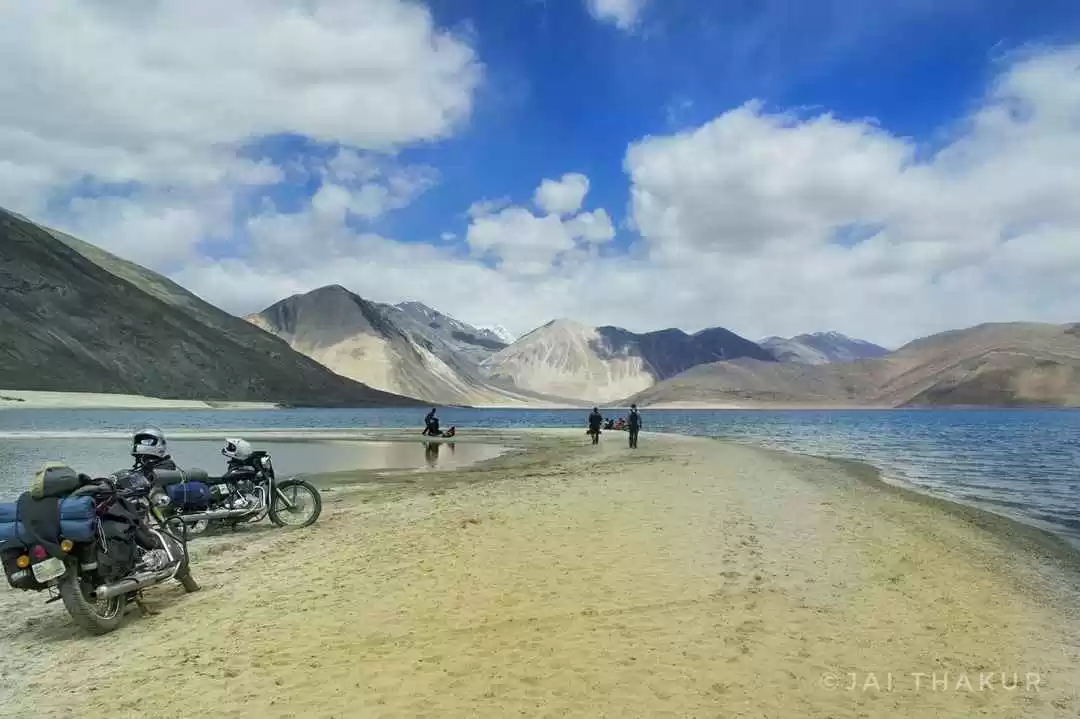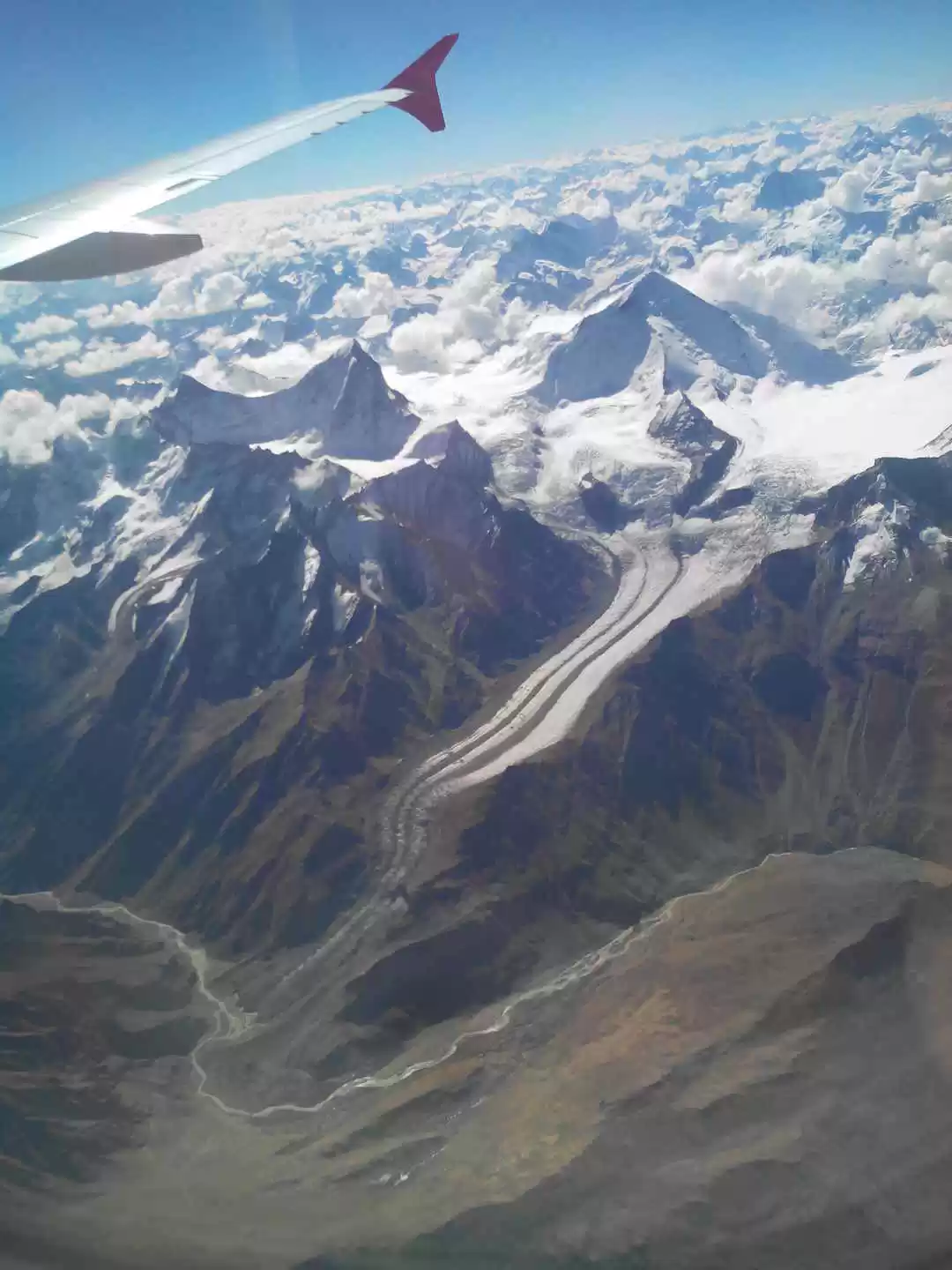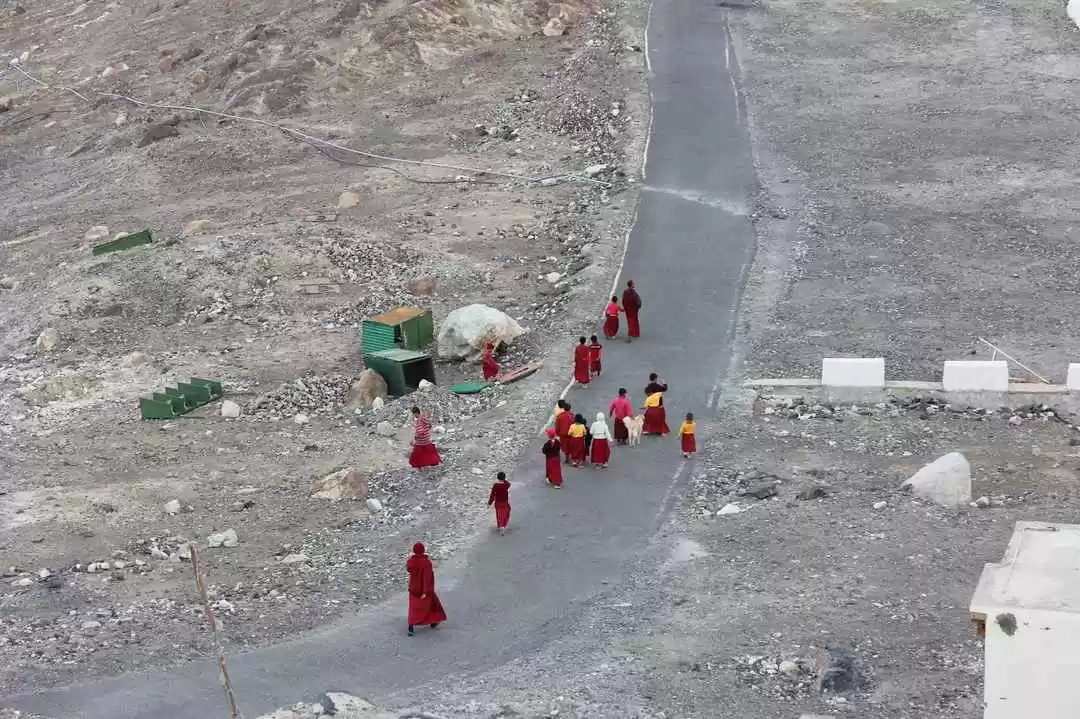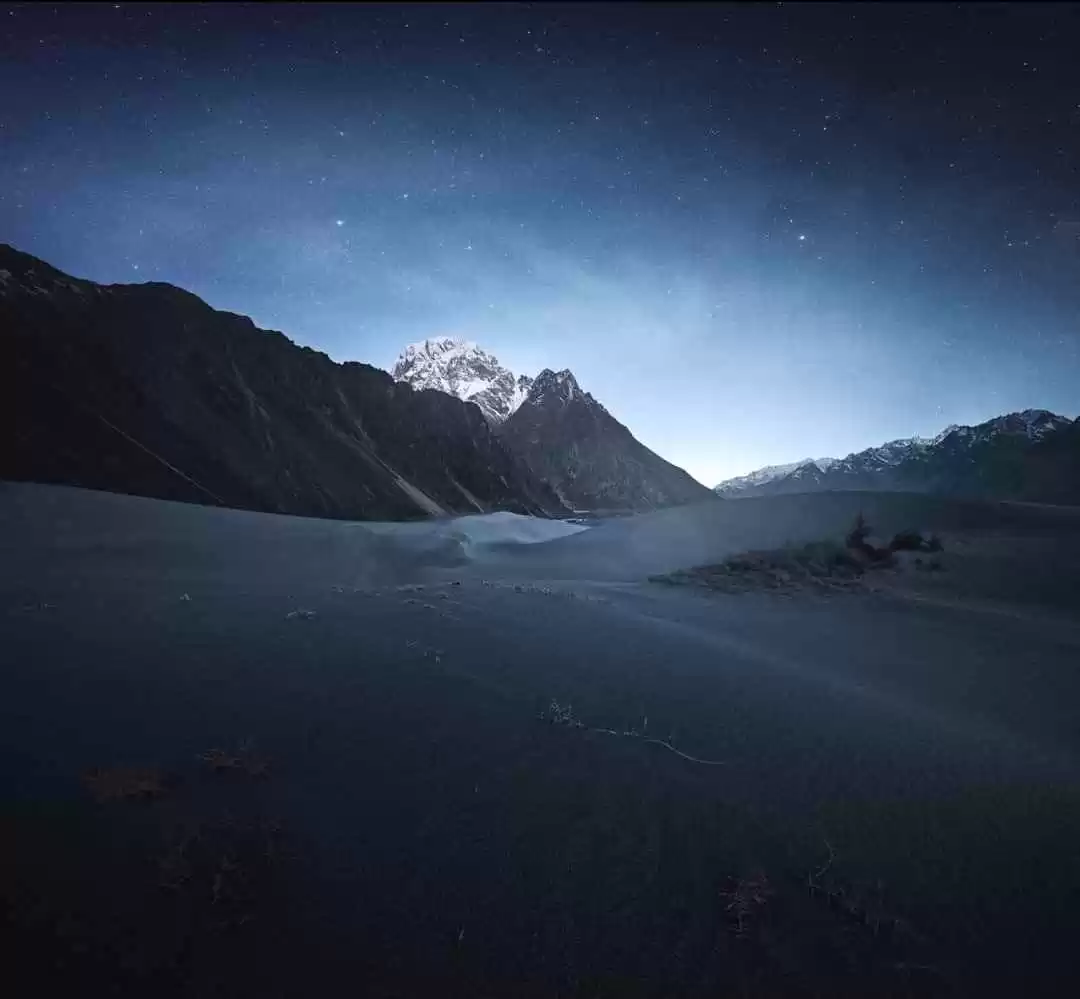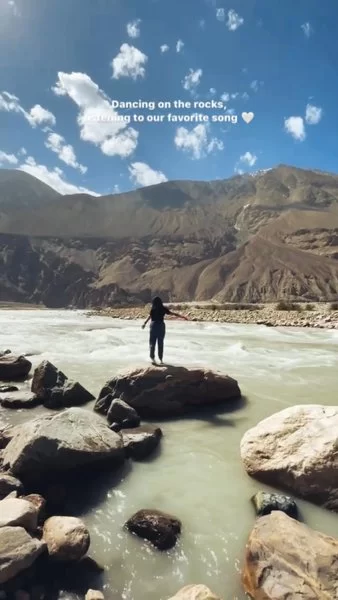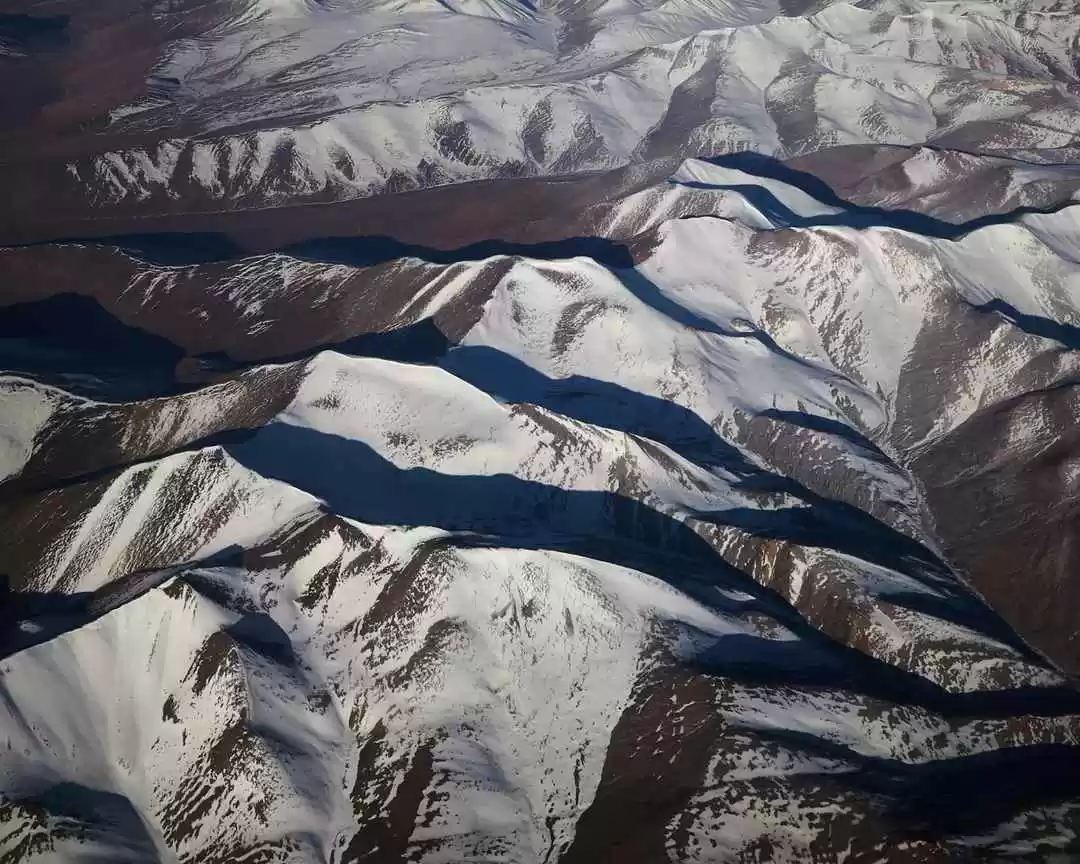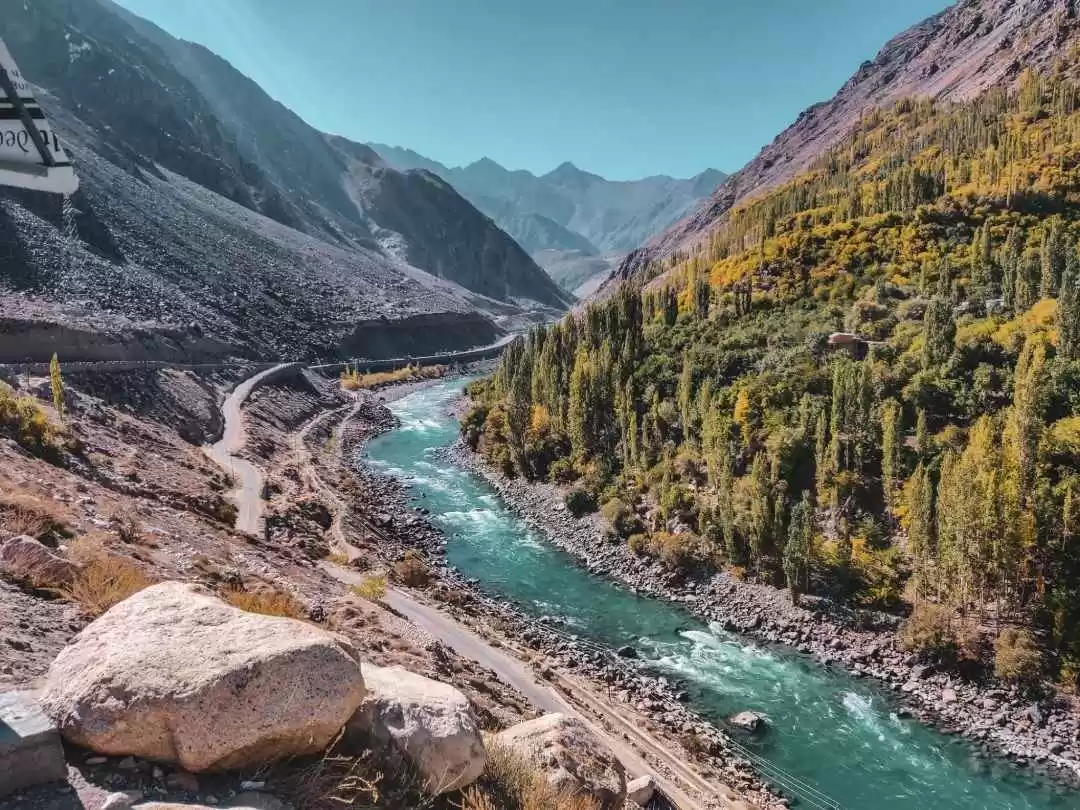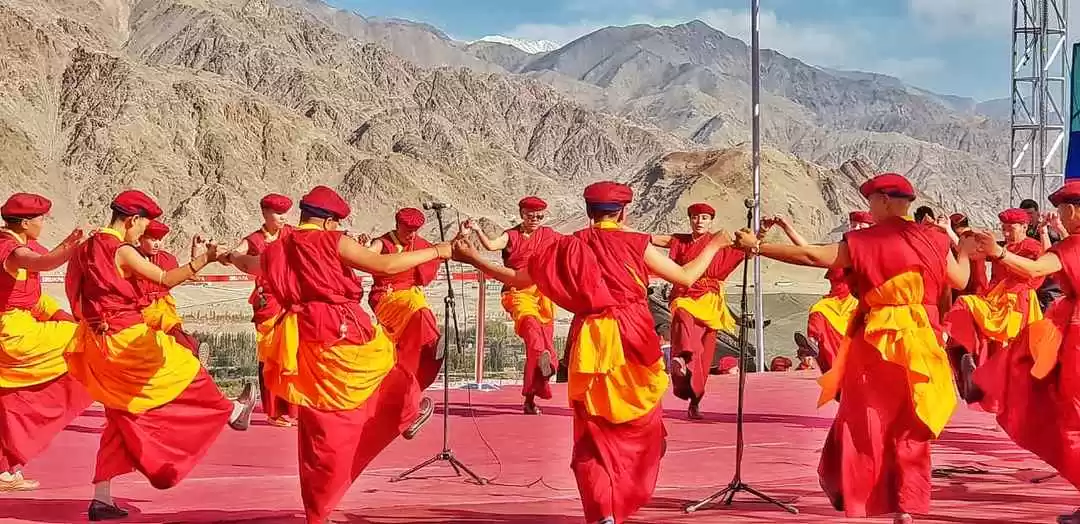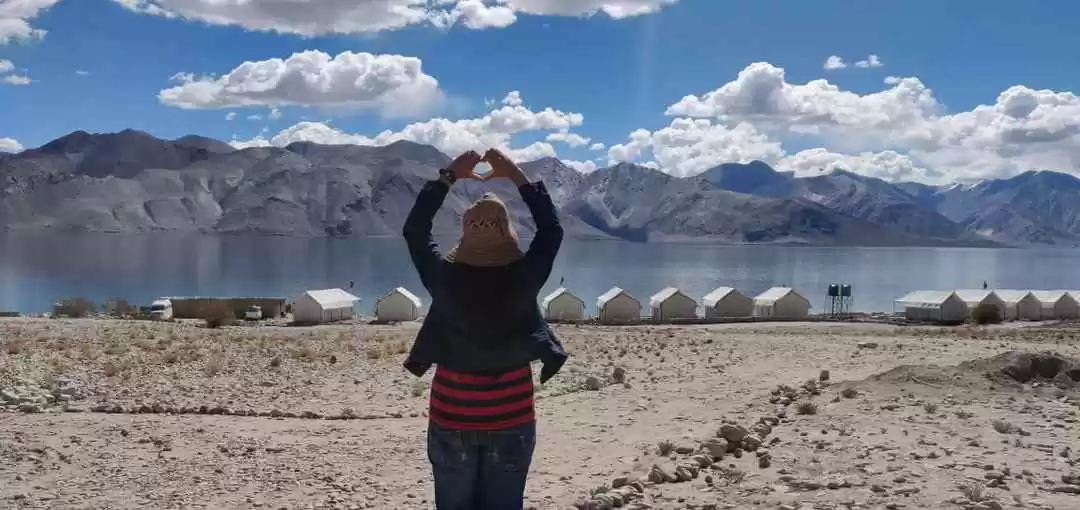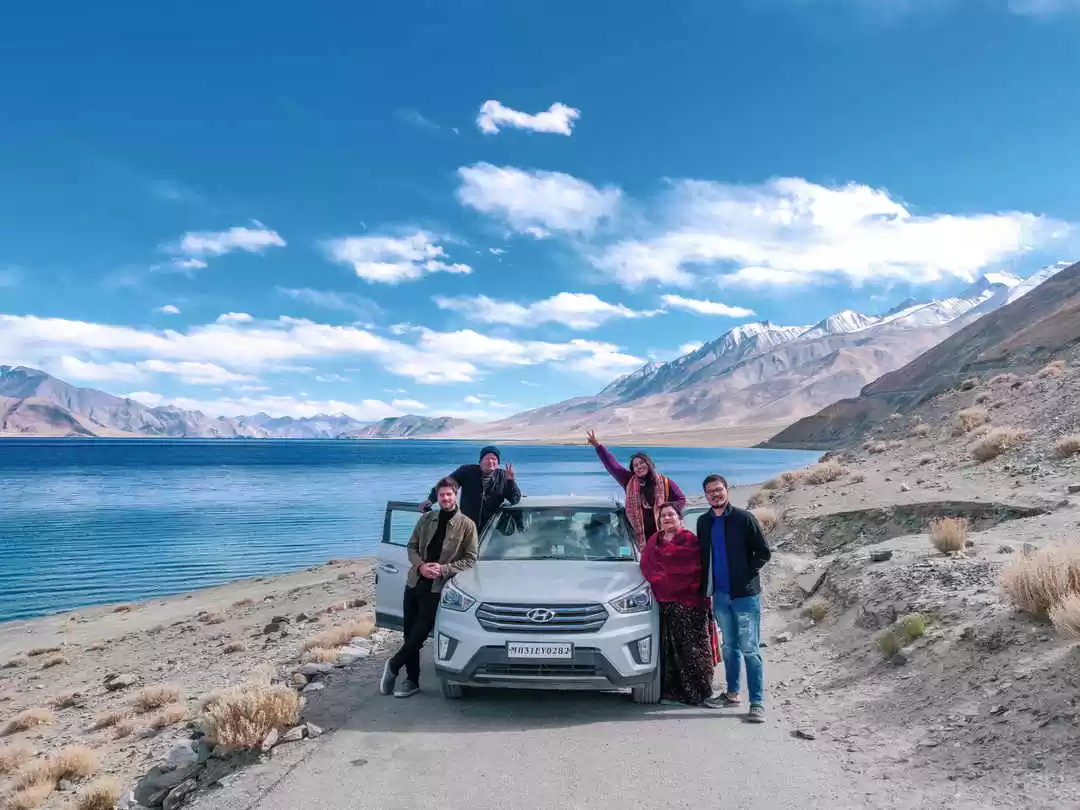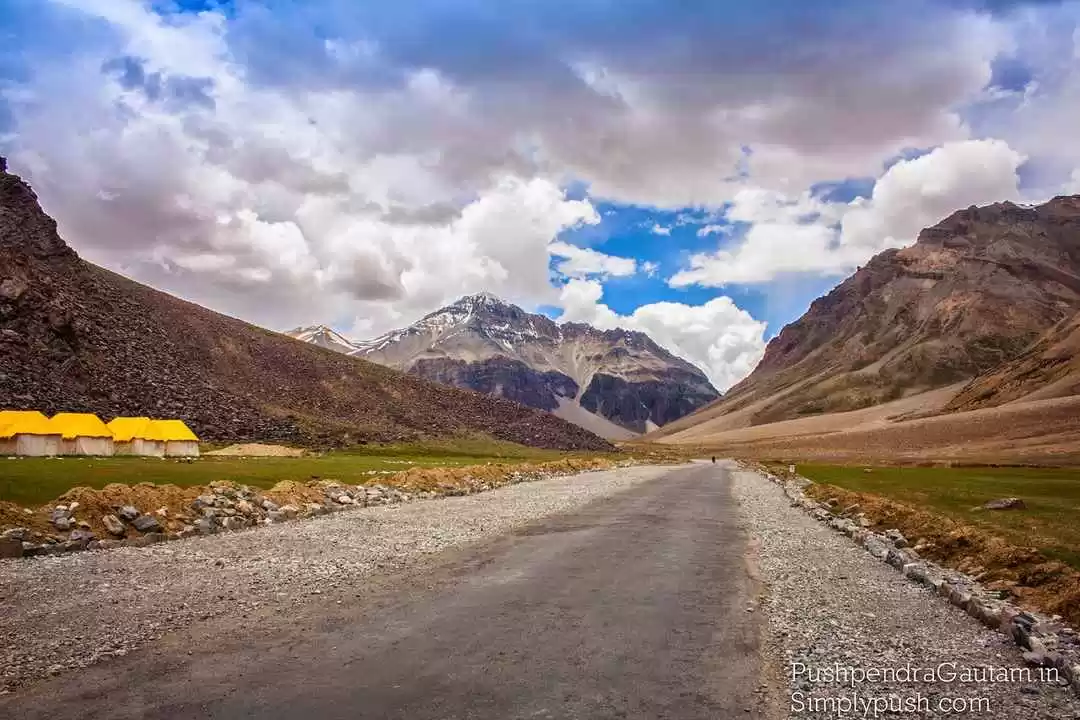Leh Ladakh Tourism and Travel Guide
All You Need to Know About Travelling to Leh Ladakh
Planning a trip to paradise? Oh well, yeah - we've got you covered. Find the best places to stay in Ladakh, most Insta-worthy cafes in Leh, road trip guides and more. This is your one stop guide to plan that epic trip to explore Leh Ladakh.
Start Planning: Find Where to Stay in Leh- Ladakh
Wondering where to stay during your trip? Here are the best luxury resorts, homestays, budget hostels and premium hotels - you can pick the one that suits your tastes and preferences.
Check Out These Super Fun Leh- Ladakh Itineraries
Ladakh is the land of high mountain passes and gorgeous lakes; white sand dunes and high-altitude monasteries. Shops sell Tibetan artifacts and curio items, yak wool shawls, and Kashmiri pashminas. Discover Ladakh with Tripoto to experience these and a lot more.
When in Leh Ladakh: Don't Miss These Unique Travel Experiences
From safari in the white dunes of Nubra to the winter trail of Chadar, from motorcycle rides to trekking expeditions, experience Ladakh and create your own stories.
We've Got The Best Leh Ladakh Tour Packages, Just For You!
Where to Eat When in Leh - Ladakh?
Take a Virtual Leh Ladakh Tour: Pictures & Videos
Ladakh is a place so postcard-perfect that mountain enthusiasts invariably include the destination in their bucket list. The terrain offers roads that are dangerous yet scenic.
Post About Your Leh Ladakh Trip & Make it to Editor's Picks
Where To Go In Ladakh?
Leh tourism has made the task of finding the best places to visit easier. With Leh tourism information available everywhere, visitors can plan their itineraries without any hassle. You only need to know what kind of experience you are looking for, and Leh tourism will have it!
Shanti Stupa
Located in Leh, Shanti Stupa is one of the first places that tourists visit. Perched on a hill, this grand Tibetan stupa is breathtaking. Overlooking the vibrant city, it offers panoramic views of the surrounding mountains, grassy fields and Tibetan houses. Constructed to mark the completion of 2,500 years of Buddhism and to further the faith’s message of peace, the stupa preserves ancient relics of Buddhist culture. What is striking about the Shanti Stupa is the mesmerising idol of Buddha which is the centre of attraction. Perched on a steep slope, it’s best to take a bike or taxi here. Owing to the growth of Leh tourism, you will find a number of Leh tourism local guides ready to take you through the history of Shanti Stupa.
Leh Palace
An important place to visit in Leh, the Leh Palace is the erstwhile residence of the king and queen. Also known as Lhachen Palkhar, the palace is a huge attraction primarily for its picturesque location. Situated on a hill, the palace offers breathtaking views of the Ladakh mountain range and Leh city. While Leh tourism and ASI has made considerable efforts to maintain the palace, some parts of the palace is in ruins owing to its size and damage through the years. It’s best to head here on your first or second day as you will be in the process of acclimatization.
Pangong Tso
Pangong Tso's beauty is incomparable. The majestic blue waters surrounded by rugged mountains is a sight one cannot forget.
The journey from Leh to Pangong is equally mesmerising. The road takes you from Leh through beautiful hamlets and passes through Chang La, claimed to be the second highest motorable road in the world. The drive on serpentine roads that lead up to Chang La, though unnerving, is an amazing experience.
Once at Pangong, there are multiple options to have a nice lunch. There are a number of dhabas where one can get good Indian food. The area along these dhabas is usually very crowded and Leh tourism has made efforts to clean and protect the area. If you would like to spend a night near Pangong Tso, you can head to Durbuk or Tangste which are 40km away. It’s highly recommended to spend a night in either of the villages after the long, bumpy journey.
Tso Moriri
Although Pangong is better known among travellers, thanks to the efforts by Leh tourism, Tso Moriri lake is gradually witnessing an increase in visitors. Situated in the Changthang area of Ladakh, this lake is the largest high altitude lake in India that is entirely in the Indian territory. Fed by fresh water springs and snow from nearby mountains, the lake is among the most sacred for Ladakhis. The breadth of the lake is 7km at its widest point, and it is 19km long. The majestic blue waters of the lake are a treat for the eyes a huge attraction for Leh tourism. The 400-year-old Korzok Monastery, on the west bank of the lake, is another attraction near the lake. Pitching of tents or construction of any hotels/homestays near the banks of the lake is strictly prohibited to preserve Leh tourism. Also, as it is close to the Line of Actual Control (LAC), an Inner Line Permit (ILP) is required to visit the lake. You can get a permit from the DC office or the Leh tourism office in the city.
Khardung La and Nubra Valley
Said to be the highest motorable road in the world and a huge draw for Leh tourism, a drive to Khardung La is thrilling, to say the least. Full of unexpected turns, the maze of fully constructed roads end at South Pullu. From South Pullu till the pass, it's a whirlwind of turns and stone-stacked roads. But despite the back-breaking ride, the views throughout the journey more than make up for it.Offering you panoramic views of the valley and the mountains above, you realise the vastness of nature. Once at the top, you may feel a little bit of a headache so treat yourself to a piping hot cup of tea and the world famous maggi. It's recommended not to spend more than 15 to 20 minutes at the top, lest nausea hits you.
From Khardung La, you can take the road leading to Nubra Valley. Verdant, vibrant beauty under the blue skies welcome you, and you will not fail to notice the difference in the landscape. You must stay at least a couple of nights in Nubra to recover from the journey and to take in the beauty of this lovely valley. Do see the double-humped camels, they are one of a kind in the world and a big part of Leh tourism. Also, the popular Leh berry owes its origin to the beautiful valley of Nubra – a huge contributor in making Leh tourism known world-wide.
Hemis Monastery
One of the most wealthy monasteries in the country, the stunning Hemis Monastery should certainly be part of your Leh Ladakh itinerary. Built by the Ladakhi king Sengge Namgyal, it is located 45km away from Leh. Home to an awe-inspiring Buddha statue in copper, the monastery also has a number of thangka paintings and other relics. The Red sect or the Dugpa Kargyupta order of Buddhism take care of all matters relating to the monastery. If you head here during the months of July when the Hemis festival is in full swing, you’ll witness Leh tourism and the vibrant culture.
Alchi Monastery
A trip to Leh Ladakh to explore Leh tourism definitely calls for a visit to the oldest monastery in the region. Located in Alchi village, the monastery supports a traditional form of architecture and has three separate temples – Dukhang, Sumstek and the Temple of Manjushri. With an intriguing mix of Tibetan and Hinduism, the monastery’s temple is built in typical Kashmiri style. A few kilometres from Zanskar River, the monastery is enveloped by surreal beauty. Due to the increased awareness owing to Leh tourism, a few restaurants serving great food have sprung up along the premises. You can definitely plan your day in a manner which allows you to have lunch amidst towering mountains and under the open blue skies.
Activities and Things to Do in Leh Ladakh
Trekking
Leh Ladakh has gradually become one of the most popular destinations for experienced and new trekkers contributing to Leh tourism. With its craggy mountains, hidden trails and awe-inspiring, it's not surprising that Leh tourism has made considerable efforts to promote trekking. From easy treks to extremely difficult routes – there is something for everyone. If you’d like to go trekking in Leh, do ensure you have enough time to cover the trek and see this beautiful region. The most popular trek for beginners is the Sham Valley trek. Nicknamed the ‘baby trek’, it is a four-day trek which is far easier than most others. Let’s take a look at some of the other popular trekking routes part of Leh tourism:
- Markha Valley
- Lamayuru to Alchi
- Chadar trek
- Ripchar Valley trek
- Tso Moriri lake trek
- Padum to Darcha trek
Rafting on Zanskar River and Sangam
Imagine a small raft, four to five people, the gushing Zanskar River and you. Rafting in Leh Ladakh is an experience that can’t be described in words. A mix of exhilaration, adventure and peace – every traveller should experience it once. For rafting in Leh, you can get in touch with any of the Leh tourism operators in the city who will arrange it for you. Rafting will take up most of your day, so it’s recommended not to plan too many things. A Leh tourism taxi from Leh will take you to Chilling, which is about 2 hours away from the city. The tip of the road is where you’ll begin your descent to the confluence of Zanskar and Indus - known as Sangam. You will be required to change into wetsuits (provided by the rafting operators). They will take you through a short verbal training which will help you understand the rowing technique. It’s fairly simple, but as is with all adventure sports, it’s extremely important to be careful.
Once in the water, you will forget about everything else but the mesmerising beauty surrounding you. The ride will start with quite a few rapids, but the route becomes calmer as you approach the Sangam point. Typically, post rafting, you will be treated to a hot, simple, delicious lunch arranged by Leh tourism operators.
Cost: Rs. 2000 to Rs. 3000 per person (depending on the season)
Shopping in Leh
Silver jewellery, antique Tibetan jewellery, home decor and postcards! Leh is a great place if you are looking to take back some souvenirs for friends and family. The popularity of Leh tourism has helped locals with their bread and butter. Lined with shops selling everything from kemp bags, pashmina shawls, semi-precious stones to homedecor, shopping in Leh tourism offers a good break if you have been on the road for the last few days. It is suggested to leave the last day for shopping in the city since you can’t plan a long trip anyway. Do remember to bargain, especially in the flea market which is on the main road.
Monastery Tour
The land of monasteries, Leh Ladakh is home to some of the oldest, biggest and most beautiful religious and spiritual structures in the world. If you are interested to learn more about these beautiful spiritual centres or simply admire the architectural marvels, you can plan a small tour of monasteries in Leh and around the city. Let’s take a look at this detailed list of monasteries which are part of Leh tourism.
- Spituk Monastery - 11km from Leh
- Stakna Monastery - 25km from Leh
- Thiksey Monastery - 19km from Leh
- Hemis Monastery - 40km from Leh
- Likir Monastery - 53km from Leh
Where To Stay In Ladakh
The increasing number of tourists has largely contributed to the growth of Leh tourism and has given the local economy a boost. From homestays to shops to tour operators by Leh tourism - locals in Leh have welcomed tourists from across the world with open arms. From luxury homestays to budget stays, you can explore a plethora of accommodation options in Leh.
Luxury hotels in Leh
Luxury Leh Ladakh hotels are designed to give travellers the best facilities and ensure a comfortable and pleasant stay. Let’s take a look at some of the Leh tourism hotels which stand out.
- The Grand Dragon
- Gomang Boutique Hotel
- Ladakh Sarai Resort
- Ladakh Himalayan Retreat
Mid-range hotels
If you want to experience the beautiful city of Leh as well as bask in the warm hospitality the locals offer, it’s best to go for mid-range accommodation. Giving you the best of both worlds, you can save some cash as well as enjoy a comfortable stay. Let’s take a look at some of the popular ones:
- Himalayan Residency Ladakh
- Hotel Ladakh Palace
- Hotel Singge Palace
- Hotel Lasermo
Hostels and Homestays
It’s said that the best way to discover a city is to befriend a local. Staying in a homestay or hostel gives you the opportunity to live the way locals live. With fresh vegetables straight from their kitchen gardens to tons of information on surrounding areas, homestays truly become your home in the mountains. And Leh tourism has made this accommodation option even more popular. Let’s take a look at some of the most popular ones:
- Leh Stumpa
- Dawa Guesthouse
- Tukchu Homestay
- Osel Premium Homestay
- Tsetan Guesthouse
Best Time To Visit Leh Ladakh
The cold desert of Leh Ladakh is accessible only for a few months in the year. While you can travel here during winter via air travel, it’s best to restrict your trip to the summer months.
The season begins in April when Leh tourism is at its busiest and when the Srinagar route is open. It’s also during summer when the frozen lakes of the region begin to melt giving way to a kaleidoscope of colours.
From April till mid-October, the region is home to visitors from across the world and it’s the best time to visit. All maintenance work for the two major highways is almost complete and visitors can have a safe journey.
Planning For Ladakh
Planning for Leh Ladakh entails a number of things such as planning thorough itineraries, extensive packing lists and preparing for the unexpected climatic conditions. Awareness by Leh tourism board has helped travellers to a large extent, however, let’s take a look at permits, AMS and what you need to pack for your trip to Leh Ladakh.
Leh tourism has made it simple and convenient for both domestic and international tourists to travel to Leh Ladakh. However, it’s important to remember that the region is a critical zone owing to its shared borders with China and the presence of the Indian Army. For all tourists, it’s important to get in-line permits for a few places in Leh Ladakh.
Inner line permits
If you are an Indian tourist, according to Leh tourism board, you will need to have Inner Line Permits to travel to some regions of Leh Ladakh such as
- Nubra Valley
- Khardung La
- Pangong Tso Lake
- Turtuk
- Tyakshi
- Digger La
- Tangyar
- Chang La
- Tso Moriri Lake
Where can I get the permit from?
You can get the inner line permits from the DC office or Tourist Information Center (TRC) at Leh. Alternatively, you can also get these permits online on www.lahdclehpermit.in.
What do I need to submit?
You will have to submit a valid photo ID, nationality proof and pay the required fee of Rs 400 + Rs 20 per day that you will stay in Ladakh to visit these places.
Acute Mountain Sickness
One of the most important things to remember when visiting Leh Ladakh is the need to acclimatize. Since most places in the region are above an altitude of 10,000 feet, travellers may be unable to manage the sudden change in terrain and temperature. It is strongly recommended to keep the first two days of your trip to Leh Ladakh for acclimatization. It is preferred that you stay in your hotel or explore only the city. This becomes more important if you are planning a trekking tour around the region.
What are the symptoms? How can I prevent the onset of AMS?
The typical symptoms of AMS are nausea, headache, dizziness, breathing trouble. The best way to avoid AMS is to increase the altitude gradually as well as to rest the body completely before setting out to explore the region. As per guidelines by Leh tourism, you can also sleep well, avoid alcohol and smoking as well as carry AMS preventive medicines with you at all times.
Packing for Leh Ladakh
The thought of planning for Ladakh can be daunting. Even though the increasing Leh tourism has ensured that travellers find everything they may need, it’s important to be prepared. We have a list of things in our travel guide that will make this task easier.
Travel essentials
- Photo IDs for all members
- Bag locks with multiple keys
- Backpack
- Lenses or extra spectacles
- Torch
- Sunglasses
- Sunscreen
- Multi-plug
- Match boxes
- Cloth bags (for garbage)
- Personal water bottle
- Hand sanitizer
- Tissues
- Lip guard/ Vaseline
- Basic medicines/ first aid
Clothing
- Two jackets
- Towel
- Warm socks
- Thermals
Biking in Ladakh
Bikers travelling to Leh Ladakh have largely benefitted from Leh tourism. From solo bikers to big biker groups - the months of May, June and July witness a huge number of enthusiastic riders making their way from all parts of the country. The most preferred route is via the adventurous and tricky Manali highway. With multiple stops for rest, it typically takes three to four days to reach the city of Leh from Manali. Dangerous yet captivating, a biking trip to Ladakh is on the list of almost every biking enthusiast.
However, if you don’t want to ride all the way from Delhi or Manali, you can always hire a bike in Leh. With multiple transport operators, there are a lot of options available on per day rate which allow you to explore the neighbouring areas. The rising popularity of Leh tourism has enabled access to the best bikes. From Avengers to KTM Duke to Royal Enfield, you can get a bike of your choice easily.
What should I remember?
In a lesser-known territory, it’s always advised to travel in groups. If you are going to be riding solo, try and ride alongside fellow riders. So in case of an emergency, you have someone to help you out. While owing to Leh tourism, the locals in Leh Ladakh are extremely helpful, there are long stretches of barren lands where there are no villages or human population.
Cuisine and Where to Eat In Leh Ladakh
The food in Ladakh will surprise you! With strong influences of Kashmiri, Nepali, Tibetan and Pahadi cuisine, the local cuisine in Leh is dependent on the food that grows there. Owing to this you will find a lot of leafy, green vegetables on your Ladakh trip - a fact made popular by Leh tourism information. Light and easy on the stomach, the cuisine comprises mostly of broth, soup and brew.
Here is a list of dishes that you must try during your Leh Ladakh trip:
Saag
Spinach cooked with red chilli and cloves in mustard oil. Best enjoyed with rice or roti.
Cholak
A Ladakhi favourite, it’s made from roasted grain, saltwater and barley.
Tabak Maaz
The best of Kashmiri and Ladakhi cuisines come together in Tabak Maaz. Marinated ribs which are kept overnight and sprinkled with milk and saffron. Cooked with Indian spices, this one is a big favourite.
Thenktuk
The yummier variant of Thukpa, Thenktuk is a mix of noodles, flour dough, onions, tomatoes and ginger-garlic relish. It’s light and a great dish to keep yourself warm when the temperature drops.
Best Places to Eat in Ladakh
Small dhabas at the foothills of the mountains or brick cafes on a mountain - the rise of Leh tourism has ensured a varied range of restaurants in Leh Ladakh which keep food lovers very happy. With quite a few places to explore, let the locals and your instincts guide you. To begin with, we have a short list of places which are a must try.
- Summer Harvest
- Bob’s Restaurant
- World Garden Cafe
- Lamayuru Restaurant
- Gesmo Restaurant
- Wonderland Restaurant and Coffee House
Typical Costs In Leh Ladakh
Typically accommodation in Leh can cost anywhere between Rs.10,500 to Rs. 56,000 for a 7-day trip. If one were to include the transport cost within the city and outside, this number would double - depending on the kind of transport you choose. Shared taxis under Leh tourism are the most reasonable, however, they follow a strict schedule and you have to coordinate with fellow travellers.
Food in Leh is quite reasonable. The most expensive meal will cost you Rs. 1500 for two and the most reasonable can be as low as Rs. 200 for two. So eat to your heart’s delight in Leh. For neighbouring areas, Leh tourism has encouraged locals to set up tea and maggi stalls, which also serve a complete, delicious Indian meal for as low as Rs. 120.
Transport In Leh Ladakh
The best way to travel in Leh is on a bike! It’s fast, convenient and quite reasonable. However, if you are not an experienced driver, riding a bike in Leh Ladakh can be very dangerous. Leh tourism has made efforts to spread awareness about Ladakh’s unfamiliar and rugged terrain, as well as the absence of roads in some areas. Off-roading, as fun as it may sound, is completely prohibited in Leh Ladakh, especially around the area surrounding Magnetic Hill.
Where can I rent a bike in Leh?
On the main Leh Fort Road, you will find numerous Leh tourism shops offering bikes on rent. To rent a bike, you must have a valid license, an identity proof and the skills! The per day price for renting a bike starts at Rs. 1000 and goes up according to the model, make and year of the bike.
Where can I rent a taxi?
On the main Leh road, you will see a number of Leh tourism transport operators who rent out taxis for trips in and near Leh. It is also a great place to find shared taxis for Tso Moriri, Pangong Tso and Nubra Valley. You can also try your luck bargaining for reduced rates - but only if it’s the low season.
Public Transport
The city of Leh is well-connected by Leh tourism government run buses. However, the erratic schedules of these buses makes it difficult to plan a trip, especially if you are heading towards Pangong or Tso Moriri. If you’d like to cut costs, it’s recommended to do so by using shared taxis.
Written by Kirat Sodhi, an in-house Tripoto writer. Kirat is a proud mom of three cats and lives for lemon tea, a good book and spontaneous travel plans. Follow her to ignite your wanderlust.


